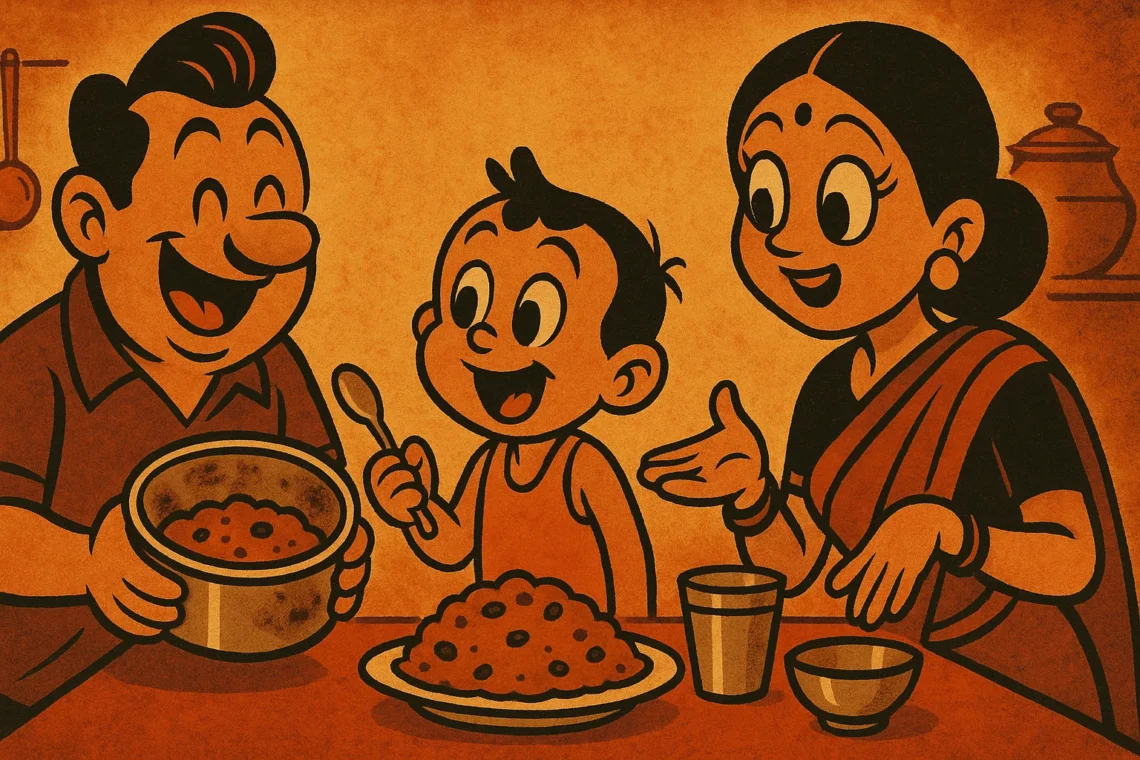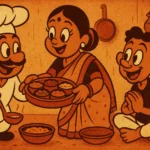Every Indian kitchen has it. Usually somewhere in the back of the cabinet, slightly misshapen, maybe missing its original lid. The dabba. The one that’s seen things. The one that refuses to retire. Ours was round, steel, and bore a permanent ring of burnt halwa at the bottom—like a culinary birthmark. It was never used for guests, never for packing food outside, and definitely not Instagram-worthy. But it was, without question, the most beloved container in the kitchen.
No one remembers how the halwa got burnt. Maybe it was a distracted Diwali morning, or a cousin too eager to stir while gossiping. What we remember is what came after—the effort to scrub it clean, the resigned sigh when the burn didn’t budge, and the quiet acceptance that this dabba now had… character.
The Dabba That Never Quit
You’d think a stained dabba would be discarded. Not in our house. In fact, once it was branded by halwa, it found a kind of legendary status. “Woh halwa wala dabba de na,” someone would say, and everyone knew exactly which one. It was the go-to for mixing namkeen, for cooling down rice before turning it into fried rice, for storing half-eaten sheera that no one wanted to finish but no one could throw away either. A dabba that had failed at dessert but succeeded at everything else.
It became our default container. Needed to soak poha overnight? Use the halwa dabba. Need to store boiled potatoes for aloo paratha Sunday? Use the halwa dabba. For everything from marinating paneer to catching stray oil from the tadka pan—this container was our MVP. It had seen more culinary action than the new, fancy nonstick stuff bought during Diwali sales that no one dared to scratch.
Why We Never Let It Go
New dabbas came and went. Branded ones, with airtight locks and transparent lids. But none of them had what this one had—stories. That scorched ring wasn’t just a stain. It was a timestamp. A quiet little reminder of festivals past, failed experiments, and lessons learned over open flames. It had been part of our kitchen soundtrack for years—the scrape of its lid, the clang when it was dropped, the hollow echo when you tapped it to see if something was still inside.
Over time, it became a teaching tool. “Don’t leave the halwa unattended,” someone would say, pointing to the bottom of the dabba like a cautionary tale. But no one really minded. In fact, during cleaning sprees, when everything was being sorted and donated, this one was always kept aside. “Yeh toh ghar ka hai,” my mother would say. Not in the sense of ownership—but of belonging.
More Than a Container
It was, in many ways, a kitchen companion. Not the hero of the meal, but always around in the background, dependable, unfussy, a little imperfect—like most of us. You didn’t praise it, but you missed it if it ever disappeared. When we moved houses, it came along. When relatives visited and asked to take food back, we gave them the good dabbas and kept this one home. Because you don’t loan out family.
Even Burnt Halwa Deserves a Home
Now, in my own kitchen in Austin, I have a collection of sleek storage containers—glass jars, bamboo lids, the works. But none of them feel like home. So I brought back a dabba on my last trip—a little dented, with a ring of stubborn residue at the base. It wasn’t from our kitchen, but close enough. I use it for boiling lentils, storing leftovers, sometimes just holding onions until I figure out what to do with them. And every time I see that dark circle inside, I smile. It’s not a flaw. It’s a fingerprint.
Because the best dabbas aren’t the spotless ones. They’re the ones with history, with stains that no amount of scrubbing could erase. The ones that teach you that sometimes, the mess-ups are what make things memorable. That even burnt halwa can leave something worth keeping behind.
Born in Mumbai, now stir-frying feelings in Texas. Writes about food, memory, and the messy magic in between — mostly to stay hungry, sometimes just to stay sane.












